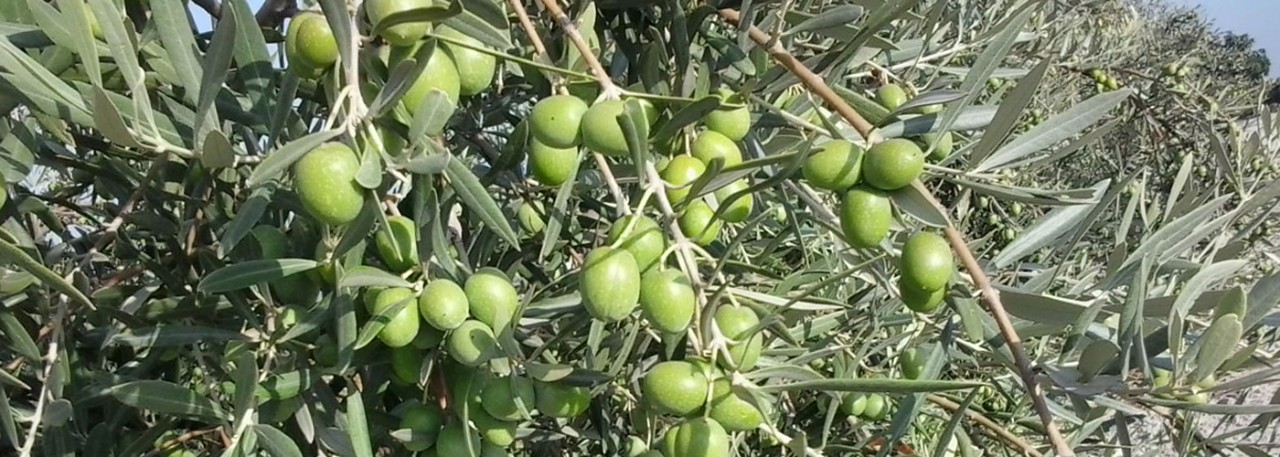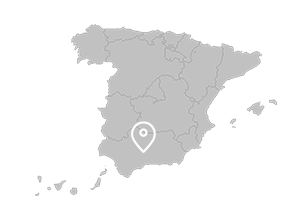.png.transform/rendition-xs/image_image%20(1).png)
Aceite de Lucena PDO
Extra virgin olive oil obtained from the fruit harvested from olive trees (Olea Europea L.), mainly of the ‘Hojiblanca’ variety, also known as Lucentina (over 90 %) and of other accepted secondary varieties (‘Arbequina’, ‘Picual’, ‘Lechín’, ‘Tempranilla’, ‘Ocal’, ‘Campanil’ and ‘Chorrúo’).
Tasting notes
Color: Between bright green and yellowish green, depending on the time of harvest (2/4 to 3/4 on the BTB scale).
Flavor: The protected oils are of medium fruitiness with notes of almond, with a balance between bitter and spicy flavors, both of which are very mild.
Smell: The fruity aroma of freshly cut green grass is dominant.
Other notes
Physical and chemical properties:
Acidity: Maximum 0.8%
Peroxide index: Maximum 15 meq O2/ kg of oil
Ultra-violet absorbance (K270): maximum 0.15.
Moisture content: maximum 0.2%
Polyphenols (% caffeic acid): minimum 100 ppm and an average of 350 ppm
Waxes: maximum 250 mg.
Production / Processing method
Olive tree growing:
The olive groves in the protected area are usually spaced at a density of between 70-150 trees per hectare, planted in a square or rectangular pattern to enable light to reach the entire productive surface of the plantation.
Harvesting:
The harvest in the protected geographical area is carried out on the basis of maturity and oil yield analyses. This facilitates the production of milder oils due to the changes in polyphenol levels and avoids natural fruit drop. Harvesting is done using mainly mechanical methods (with buggies or vibrators) and usually begins, although this may vary according to each year, between early November and early December. All olives used for obtaining the protected oils are harvested directly from the trees and separated during harvesting and transport from olives collected from the ground.
The fruit is transported within 24 hours of being harvested. Harvesting is also done in a way that does not adversely affect the fruit, which is kept clean and healthy.
After washing, the fruit passes through draining equipment to eliminate as much water as possible. Once the fruit has been cleaned and weighed, it is stored in holding hoppers before being crushed, within 24 hours of arrival at the plant.
Crushing: The operation is done on a continuous basis, using metal hammer crushers, before passing through a sorting machine to ensure the particles coming from the crushing are of uniform size.
Mixing: Either horizontal or vertical beaters are used. The temperature must not exceed 35ºC in the mixture obtained at the end of the beating process.
Phase separation: After beating, the paste obtained is injected into the decanter using pumps. The main product obtained is the oil, which then passes through a vertical centrifuge at a temperature no higher than 35ºC, which cleans the oil thoroughly.
Decanting: The oil is usually sent to holding tanks known as decanters, in which the oil settles and a natural decanting process takes place as a result of gravity.
Storing the oil: Once the oils have been obtained, they are stored in tanks until they are packaged and sold.
Packaging: The DOP Lucena area has large-scale highly mechanized packaging plants as well as small manual plants run by private producers. This makes it possible to comply with the requirement for the oil to be packaged in the area of origin.
Geography / Relief and climate
In geological terms, compact limestone, loam, iridescent and coral limestone, limestone and chalk, all of which are soils typically found in the Jurassic landscape, make the best ground on which to cultivate olive trees. These soils are found throughout the Rute area and are abundant in the Aguilar de la Frontera, with chalk being particularly predominant to the east of Montilla and in Monturque, where there is a layer of loam with grey gypsum, a type of soil also found in Puente Genil and in Lucena.
The average height above sea level in the production area varies from 171 m in Puente Genil to 800 m in Iznájar. This average height of 400 m results in good quality oils being obtained.
In terms of weather, the area has a Mediterranean climate with mild to cold winters and dry, hot summers. Minimum winter temperatures do not drop below -8ºC and summer temperatures often rise to over 40ºC for extended periods of time.
Regulatory Council
Consejo Regulador de la DOP Aceite de Lucena
C/ Sevilla, 5
14900 Lucena (Córdoba)
Tel: + 34 957 503 325
info@dolucena.es
www.dolucena.es
Sources:
- Spanish Ministry of Agriculture
The protected oils are balanced between bitter and spicy flavors, both of which are very mild.


- Aceite de Lucena 1
- Aceite de Lucena 2

Lucena (Andalusia)
